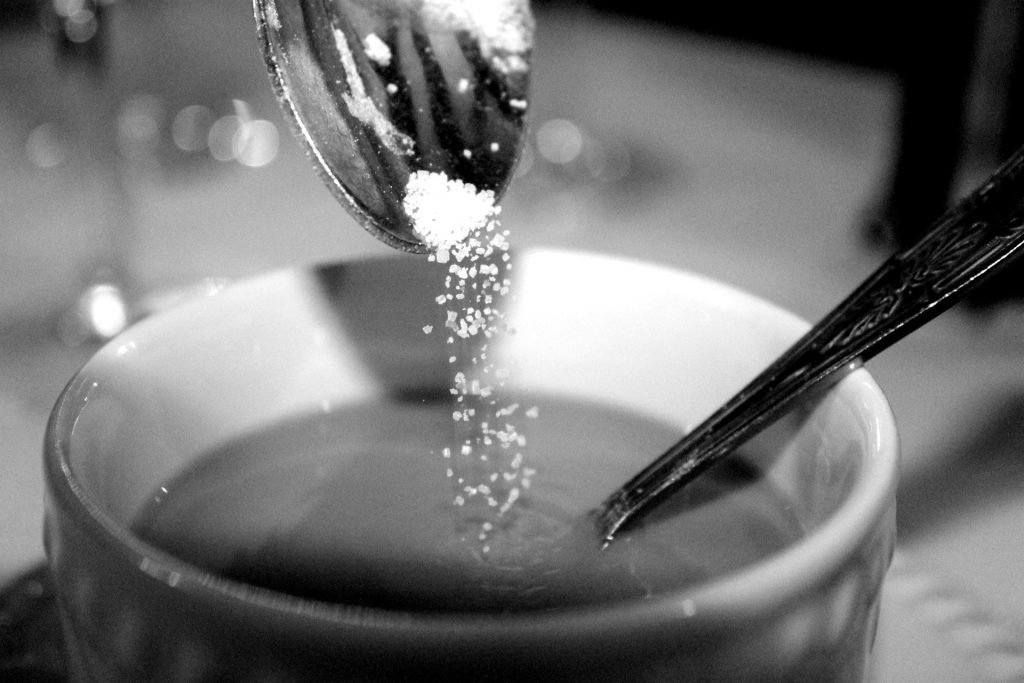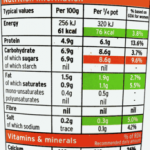
How To Calculate Added Sugars?
It’s not easy to try and work out how much sugar has been added* to your children’s favourite food. Some say it is not even easy to work out what quantity of total sugars are in a product in the first place. This is a simple guide to help you work out both total and added sugars.
*By added sugars I mean sugars that are added to food or drink products when they are processed or prepared. This does not include naturally occurring sugars such as those in milk, vegetables and fruits. Added sugars are found in foods such as sweets, cakes, biscuits, chocolate, as well as fizzy drinks and juice drinks .
Working Out Total Sugars
Total sugars describes the total amount of sugars from all sources i.e. added sugars as well as those from milk and those naturally present in fruits and vegetables.
So let’s say you’re in the supermarket and you have a product in your hand. You are looking at the nutrition label on that product and you want to know how much total sugar is in it.
- Look on the label for ‘sugars’ or ‘of which sugars’, both of which you’ll find under the ‘carbohydrate’ entry on the nutrition label. This tells you how much sugar is in that product per 100g.
- Now calculate how much sugar is in the product based on the size of that product or based on the portion size to be consumed. If the product/portion size is only 50g you’ll need to halve that amount of sugar to find out how much is in your product/product size. If the product/portion size is just 20g you’ll need to divide total sugars by 5 (that’s because 20g goes into 100g 5 times).
- Now in order to find out how many teaspoonful’s of total sugar are in a product/portion size take the total sugars for the product/portion size and divide this by 4 (that’s because 4g of sugar = 1 teaspoonful). So if the total sugars for the portion size is 8.6g then the total sugars for the portion size in teaspoonful’s is just over 2 teaspoonful’s of sugar. See example below.
 I hope you are with me so far!!
I hope you are with me so far!!
Note: Suitable sugar intake per day by age:
- age 2 – less than 13 grams or 1 to 3 teaspoons per day
- age 3 – less than 15 grams or 2 to 4 teaspoons per day
- age 4 to 6 – less than 19 grams or 3 to 5 teaspoons per day
- age 7 to 10 years – less than 24 grams or 4 to 6 teaspoons per day
- age 11 and over – less than 30 grams or 5 to 7 teaspoons per day
Working Out Added Sugars
So you have just nailed the total sugars issue then you want to work out how much sugar is naturally present in a product and how much has been added. Well the best thing to do here is to:
- Read the ingredients list to look for added sugars in the product. These are some of the possible names that added sugars may be listed as: cane sugar, dextrose, honey, brown sugar, high fructose corn syrup, barley malt, fructose, treacle, invert sugar, fruit juice concentrate, corn syrup, fructose, sucrose, glucose, crystalline sucrose, nectars.
- Look at where in the ingredients list the added sugars feature. If they’re higher up the ingredients list they’ll be present in larger quantities than if they’re further down the list.
- Learn how much sugar is naturally present in food products per 100g. This helps you work out how much as been added to a processed food product.
Fruits (sugar naturally present in 100g)
- Mangos – 3.2 teaspoons of sugar
- Bananas – 3 teaspoons of sugar
- Apples – 2.6 teaspoons of sugar
- Pineapples – 2.5 teaspoons of sugar
- Grapes – 4 teaspoons of sugar
- Lemons – 0.6 teaspoons of sugar
- Kiwi fruit – 2.3 teaspoons of sugar
- Apricots – 2.3 teaspoons of sugar
- Strawberries – 1.3 teaspoons of sugar
- Raspberries – 1 teaspoon of sugar
- Blueberries – 1.7 teaspoons of sugar
- Cranberries – 1 teaspoons of sugar
Vegetables (sugar naturally present in 100g)
- Beetroot – 1.7 teaspoon of sugar
- Carrot – 1.2 teaspoon of sugar
- Sweetcorn – 0.8 teaspoon of sugar
- Red Pepper – 1.05 teaspoon of sugar
- Sweet Onion – 1.25 teaspoon of sugar
- Sweet Potato – 1.05 teaspoon of sugar
Dairy Products
- Milk (sugars naturally present per 100ml)
- whole – 1.175 teaspoon of sugar
- semi-skimmed – 1.2 teaspoon of sugar
- skimmed – 1.2 teaspoon of sugar
- Cheese (sugars naturally present per 100g)
- light cream cheese – 1.275 teaspoon of sugar
- quark – 0.95 teaspoon of sugar
- cottage cheese – 0.6 teaspoon of sugar
- most other cheeses – 0-0.2 teaspoon of sugar
- Yogurt (sugars naturally present per 100g)
- 1-2 teaspoon of sugar depending on fat content. The higher in fat the lower in sugar. For example a 150g pot of yogurt can often contain 20g of added sugar (equivalent to 5 tsps) in addition to the 6-12g of naturally present lactose.
In summary, it is reasonably straight forward working out the amount of total sugars in the product or portion size of a processed food product by reading the nutrition label. What isn’t so easy is working out the added sugars. The best thing to do is simply be aware that some fruits and natural yogurt naturally contain quite a high level of sugar. Food products based on these ingredients may have total sugars that seem very high so do account for the natural level of sugar when making the buy/leave decision.

If you have a food with
Total sugar 10g. Includes 5G added sugar is that
A total of 10 sugar. Or do you
Add tha 10 plus 5G. To equal a grand total of 15 g sugar
the sugar stated in the nutrition label will include those naturally present AND those added so that is your total. If you want to reduce your added sugars then it is advisable to use the second half of this article outlining how to identify what is naturally present within the food and then what must have been added.
Great article. Really usefull
Hi,
If only total carbohydrates and added sugar values are present, how should we calculate total sugar value. Value for fibers is also not present so is there any way to approximate total sugar value?
do you mean if the label doesn’t have “of which sugars” under the total carbohydrates value?
How would you do this with drinks since they use different measurements
Necesito aprender acerca de esto 🙏